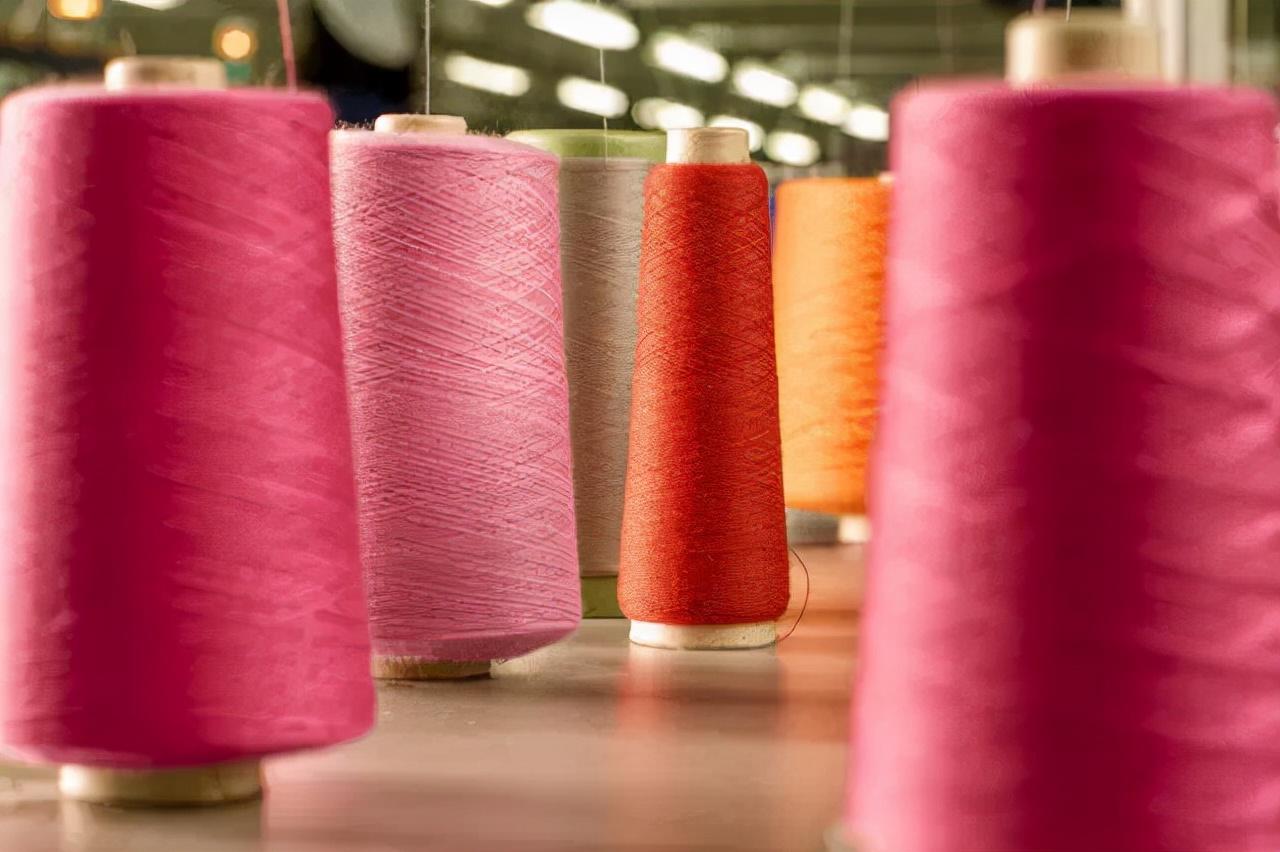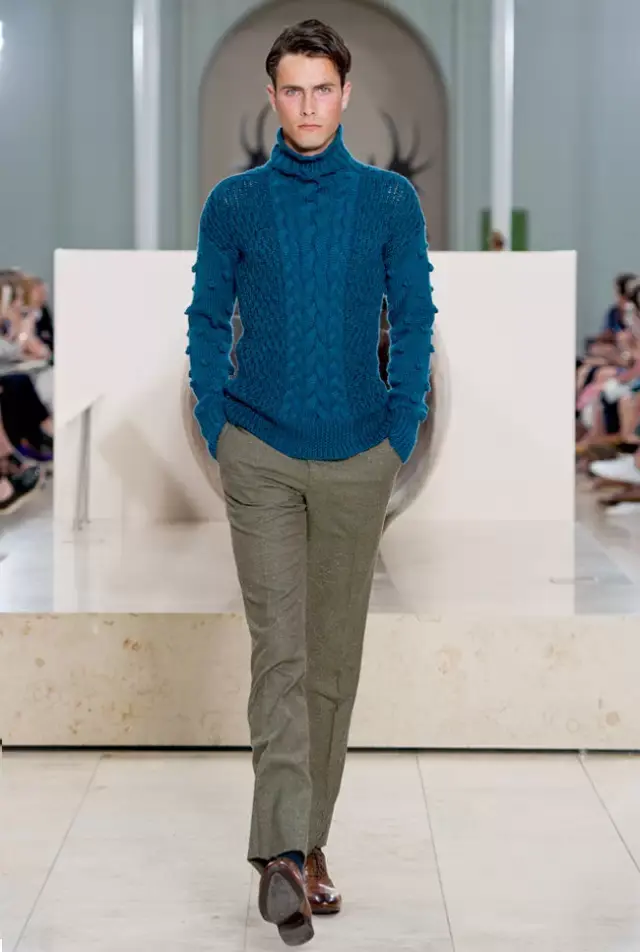| What are woolen and worsted?
Woolly spun cashmere and worsted cashmere, simply put, are cashmere raw cashmere in the process of spinning into yarn, due to different technological processes. The resulting yarns have two different thicknesses in appearance.
There is a process in the spinning process called combing, and the yarn produced through this process is called combed yarn, but the yarn produced by this process is called combed yarn. It is called carded yarn or woolen yarn. Combed yarn is superior to carded yarn in terms of strength, evenness and other aspects.

| What is the difference between the weaving effects of woolen and worsted?
Wool-spun cashmere products have the weaving effect of stick needles. The suede is rich and smooth, the color is uniform and slightly shiny, and it feels warm to the touch. There is no wrinkle after folding. Marks, soft wool and strong resilience.

▲ Woolen cashmere sweater
Worsted cashmere products have a smooth and smooth surface. The texture is fine and clear. The luster is soft and natural, the hand feels soft and elastic.

▲ Worsted cashmere sweater
Analysis of worsted, semi-worsted and woolen spinning
The biggest difference between semi-worsted spinning and the previous traditional wool worsted and woolen spinning processes is that it integrates cotton spinning technology and wool spinning technology to form a new multi-component mixing process. The front line is Woolen spinning and woolen equipment plus cotton spinning carding machine, draw frame, roving frame, spinning frame; the latter is worsted spinning winding, doubling and twisting equipment. Changes in equipment and processes have solved problems that the original wool spinning equipment could not solve.
Semi-worsted spinning can successfully blend cotton, wool, silk, hemp and other natural raw materials with other new man-made fibers and chemical fibers. The raw materials of woolen semi-worsted include cashmere, wool, silk, rabbit velvet, cotton, ramie and other natural fibers, soy protein fiber, milk protein fiber, Tencel, modal, bamboo fiber, viscose fiber and other man-made fibers, as well as The successful blending of acrylic, polyester, nylon and other chemical fibers has an extremely rich product structure.
Wooling is a spinning method of wool spinning. Spun cashmere has a relatively thick count and is cheap. The yarn has poor yarn properties and is prone to pilling and deformation. The count of semi-worsted is roughly around 28/2. Compared with woolen, the price is higher and the properties are better. Worsted cashmere is the best, with a count of more than 2/48, and the items made are soft and delicate. Very comfortable and warm to wear. However, this kind of yarn is very expensive and is commonly known as “the soft gold in wool yarn”. About 1800 yuan/kg or more.
Cashmere high-count yarn production lines that have appeared in China include semi-worsted spinning and fully worsted spinning. Semi-worsted yarn can be spun to less than 16.67tex without combing to remove short fibers. It can meet the needs of general light and thin fabrics, has a high yarn yield and relatively low cost. Worsted yarn needs to be combed to remove short fibers, and the spinning count can reach 10tex, but the cost is high, and due to yarn strength issues, it often needs to be blended with other fibers, so it is suitable for special light and thin fabrics. Therefore, the development and production of semi-worsted cashmere yarn, following woolen cashmere yarn, is increasingly favored by the country.The difference is that it integrates cotton spinning technology and wool spinning technology to form a new multi-component mixing process.
4. The so-called worsted and woolen spinning should be explained from two perspectives, one is the fiber, the other is the weave, and the fiber is generally Worsted is 32-count and 40-count. The higher the count, the smoother the fiber and fewer joints. It has high natural density, good wear resistance and good comfort. The other is the weaving method. When the worsted fabric is weaved, The machine using the fine spinning method prevents fiber breakage and has a high density. Woolen fabrics have many joints and are easy to break. They have poor natural wear resistance and poor density.
5. Worsted spinning means using higher-quality cotton raw materials when spinning to spin yarn with high twist and low hairiness (generally called single-strand yarn). Yarn, plied thread). Worsted products have a lighter, thinner feel, denser texture, better wet fastness, and are durable and wear-resistant, so their prices are relatively high.
6. The difference between semi-worsted yarn and worsted yarn is mainly in the production process. Worsted yarn has one more combing preparation and combing process than ordinary yarn. Semi-worsted yarn is a mixture of worsted sliver and common sliver. It is commonly known as semi-worsted yarn and is slightly better than carded yarn. Slightly inferior to worsted yarn. Combed wool yarn has the characteristics of smooth surface, high elasticity and good strength, and is used to weave serge, tweed, vanity and other fabrics.
Semi-worsted yarn does not have the above characteristics.
7. What do worsted, semi-worsted and woolen spinning mean in wool spinning, and what are the differences between them?
(1) Carded wool spinning
is to loosen the net hair meridian, It is a wool spinning process where the wool is carded, divided into narrow strips and rolled, and then directly spun. It includes processes such as mixing and adding oil, carding, slitting and twisting into roving, and then drafting and twisting into oil yarn. The spun yarn has better fluffiness, softer feel and lower count, and is used for weaving woolen fabrics.
(2) Worsted wool
After washing the hair and combing it into strips , after combing and the preparation and finishing process before and after, the combed top is made, and then spun into yarn, which is combed wool spinning. This process includes carding, sorting, combing, whole and rewashing, scouring, roving, spinning and other processes. It is mainly divided into two stages: strip making and spinning. Internationally, combed top is a commodity, so companies that produce combed top are often called top factories. Combed wool yarn has the characteristics of smooth surface, high elasticity and good strength, and is used to weave fabrics such as serge, tweed, vanillin, and other fabrics.
(3) Semi-worsted wool
Similar to combed wool, but Without combing, preparation and finishing. The process flow is: (wash the wool) → mix and add oil → card → needle comb (3 passes) → roving → spun yarn. It has the characteristics of short process and low cost, but the yarn quality is slightly worse than combed yarn. It is suitable for spinning low-count (2-12 metric) yarn and medium-count (30-40 metric) yarn. Most of the products are hand-knitted yarns. , knitting yarn, carpet yarn, yarn for industrial and decorative fabrics, etc., and can also be used to weave general clothing materials.






